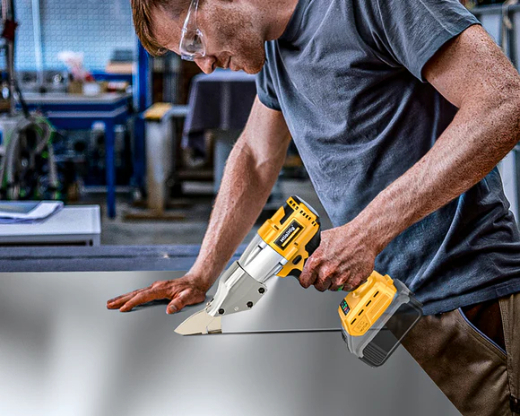
8 ESSENTIAL METAL CUTTING TOOLS EVERY DIYER AND PRO SHOULD OWN
Cutting metal is a staple task in construction, fabrication, and DIY projects—but using the wrong tool can lead to frustration, wasted time, or even injury. Whether you’re crafting custom metal art, renovating a home, or tackling industrial jobs, choosing the right metal cutting tools is critical for clean, efficient results.
In this guide, we’ll break down 8 essential metal-cutting tools, their best uses, and expert tips to maximize safety and precision.
1. Cordless Angle Grinder: The Versatile Spark Machine
- Best For: Cutting rods, pipes, or sheet metal quickly.
- Angle grinders are a staple in any metalworker’s kit. Fitted with a cut-off wheel, they can tear through rebar, tubing, and rusty bolts with ease. They're portable, powerful, and great for jobs that don’t need laser precision.
2. Reciprocating Saw: The Demolition Beast
- Best For: Cutting through metal pipes, nails, or rebar in tight spaces.
- With the right metal-cutting blade, a reciprocating saw can cut through nails, pipes, and sheet metal—even embedded metal in wood. It’s a go-to for remodeling and demolition work.
3. Cordless Circular Saw: Tool For Straight Metal Cutting
- Best For: Slicing sheet metal, aluminum roofing, or steel studs.
- Fitted with a carbide-tipped metal cutting blade, a cordless circular saw can power through steel roofing, aluminum panels, and angle iron with surprising accuracy.
4. Portable Bandsaw: Precision for Tradespeople
- Best For: Clean cuts on pipes, conduits, or structural steel.
- Metal-cutting bandsaws are precise and cleaner than grinders. Portable versions are excellent for field work, while benchtop models shine in the workshop. They’re ideal for cutting pipe, conduit, and structural steel with minimal sparks or noise.
5. Jigsaw: Curves and Intricate Designs
- Best For: Cutting shapes in thin metal.
- A cordless jigsaw becomes a powerful metal-cutting tool when paired with the right bi-metal or carbide blade. It excels at cutting curves, notches, and irregular shapes in thin metal like sheet steel, copper, or aluminum
6. Oscillating Multi-Tool: The Detail Ninja
- Best For: Flush cuts, trimming bolts, or small repairs.
- A cordless oscillating multi-tool may not look like a metal-cutting powerhouse, but with a bi-metal or carbide blade, it’s incredibly effective for cutting nails, bolts, sheet metal, and pipe in tight or awkward spaces
7. Metal Shears: Fast Tool To Cut Sheet Metal
- Best For: Cutting sheet metal, aluminum roofing, or steel studs in straight lines or large curves.
- Metal shears are built for fast, clean cuts in steel, aluminum, and other thin-gauge metals. Available in manual, electric, and cordless versions, they’re great for roofing panels
8. Nibbler: The Precision Sheet Metal Artist
- Best For: Cutting complex curves, circles, or internal cutouts in thin sheet metal (≤ 2mm).
- Nibblers punch out tiny bits of metal as they cut, making them ideal for curves, corners, and intricate patterns without warping the material. They’re quieter and produce less heat and sparks than grinders or saws.
From angle grinders to nibbler, each metal cutting tool has its niche. For DIYers, a cordless angle grinder and jigsaw are versatile starters. Pros will love the precision of a portable bandsaw or nibbler.
Boost your project’s success by pairing the right tool with the right blade—and never compromise on safety.






